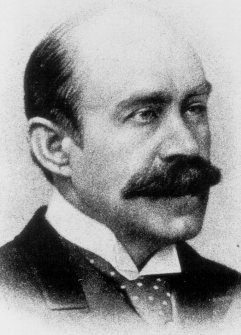Lisa is a Mona: Challenging Victorian Gender Assumptions
Melad Abou Al-Ghanam and Denielle Jackson
Ryerson University
Walter Pater and the Mona Lisa
|
Walter Pater’s The Renaissance: Studies in Art and Poetry@Walter H. Pater, Studies in the history of the Renaissance (London: Macmillan, 1973) 91-122 is a book first published in 1873
by Macmillan & Co. under a slightly varied title: Studies in the History of the Renaissance.@Walter H. Pater, The Renaissance: Studies in Art and Poetry (London: Macmillan, 1977) 105-139
Pater’s influential book has seen many revisions and reincarnations and
continues to circulate libraries worldwide in modern day 21st
century. Pater’s writings and contributions to the Fortnightly Review@Walter H. Pater, Studies in the history of the Renaissance (London: Macmillan, 1973) 91-122 served as the precursor to the The Renaissance, a compilation of his
essays on art and poetry with chapters dedicated to Sandro Botticelli,
Michelangelo, Joachim du Bellay, Winckelmann, as well as Leonardo Da Vinci. Of
interest is Pater’s essay on Leonardo Da Vinci, his first submission to the
monthly Fortnightly Review. Walter
Pater’s critique of the Mona Lisa revived
interest in the portrait three centuries later as he saw it as more than just a
great piece of art. Therefore, the portrait’s iconic status is no coincidence
and is the result of a long thread of commentaries ignited by influential 19th
century art critics such as Walter Pater and Theophile Gautier. In his 2001
book, Becoming Mona
Lisa: The Making of a Global Icon, Professor Donald Sassoon
of University of London, argues that Pater and Gautier were the discoverers of
the Mona Lisa.@Donald Sassoon, Becoming Mona Lisa: The Making of a Global Icon (New York: Harcourt, 2001) However, “of the
two, Pater’s influence has proved the greater, as his eloquent passages on the Mona
Lisa were themselves of such poetical power that many men committed these
words to memory. It was not at all unusual for a man to recite Pater as he
gazed at the painting itself.”@Donald Capps. "Leonardo's Mona Lisa: Iconic Center of Male Melancholic Religion." Pastoral Psychology Vol. 53, No. 2 (Nov 2004): 107-137 |

Walter Pater
|
and trafficked for strange webs with Eastern merchants, and, as Leda, was the mother of Helen of Troy, and, as Saint Anne, the mother of Mary; and all this has been to her but as the sound of lyres and flutes, and lives only in the delicacy with which it has molded the changing lineaments, and tinged the eyelids and the hands." -Walter Pater

W.B. Yeats used the quote-- controversially-- as the first 'poem' in his 1936 Oxford Book of Modern Verse
|
However, Pater’s attempt to decipher the portrait and emphasize its emotional impact on the spectator has far-reaching implications on authors that would follow such as Michael Field, Oscar Wilde, as well as Sigmund Freud, the pioneer of psychoanalytic theories. Freud’s 1919 essay on the uncanny stems from Walter Pater’s work and his ability to see the hidden double meaning behind the Mona Lisa’s half-smile, “unfathomable smile, always with a touch of something sinister in it.”@Walter H. Pater, "Notes on Leonardo Da Vinci," Fortnightly Review 6:35 (1869): 494 Furthermore, Pater’s allusion to Da Vinci’s sexual attraction to men attributes the ideal, womanly beauty of the Mona Lisa to Leonardo’s mother hence the “weary eyelids” and “older than the rocks.” The fact that Leonardo Da Vinci was raised by his mother with no fatherly figure in his life to care for him further strengthens the argument that the portrait’s complexity has to do with the personal connection it had to the only ideal woman in Leonardo’s life: his mother. Therefore, Pater’s analysis and interpretation of the Mona Lisa took into account Leonardo’s biography hence the mention of Vasari, the renowned Italian artist biographer. Pater’s work had far-reaching implications that transcended into areas of study such as psychology and psychoanalysis. |
Walter Pater can be seen as a pioneer of Queer
Theory for challenging hegemonic gender assumptions perpetuated by Victorian society.
Through his work, which often exhibited transparent hints of homoerotic desire,
Pater legitimized homoeroticism and homosexuality. Renowned British art historian
and director of the National Gallery in London, Michael Levey, speculated that
Pater "guarded the secret of his own emotional
urges, possibly never revealing-even to someone like Simeon Solomon-the
intensity of his yearning for the ideal male friend."@Thaïs E. Morgan, "Reimagining Masculinity in Victorian Criticism: Swinburne and Pater". Victorian Studies 36.3 (1993): 315-332 Pater imagined the Mona Lisa to emulate “womanly beauty”
and “doubtful sex” at the same time, “Pater aims not at
imagining men-who-would-be-womanly in the Renaissance but
men-who-would-be-another-kind-of-manly.” Therefore, much of
Pater’s reading into the Mona Lisa
and other works of art had do with his own personal struggles in the
conservative Victorian era, seeing as he was very secluded and spent his entire life living with his
two spinster sisters in London.@Laurel Brake. "Walter Pater Biography" The Yellow Nineties Online. Web. Pater’s work still resonates in modern day 21st
century, where the fight for the legitimization and acceptance of homosexuality
continues. The conclusion to the Renaissance embraces and advocates for a
lifestyle of hedonism, which Pater felt Victorian society was not yet ready
for. Therefore, the conclusion was retracted from the revised second edition of
The Renaissance only to be included in further editions. Following Oscar Wilde's trial, Walter Pater was exhausted from advocating for change through his work in his final years. Pater confessed to one of his undergraduate students, "I feel there are many things which are bound to come, though I do not feel willing to aid them in coming."@M. Seiler. Walter Pater: A Life Remembered (Calgary: University of Calgary Press, 1987)


